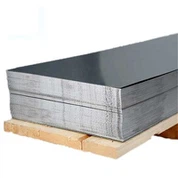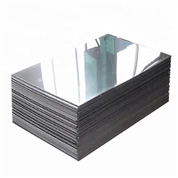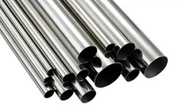316 Stainless Steel Strip
316 Stainless Steel Strip is a versatile and durable material widely used in industries where corrosion resistance is a priority. Known for its excellent performance in harsh environments, this grade of stainless steel is ideal for both industrial and consumer applications. With a high resistance to chloride corrosion, it offers superior durability compared to 304 stainless steel. This product is available in various widths and thicknesses to suit a wide range of applications, from architectural to automotive and chemical industries.
- Product Introduction
316 stainless steel strip is the gold standard for applications requiring exceptional corrosion resistance, particularly in chloride-rich or acidic environments. With 16–18% chromium, 10–14% nickel, and 2–3% molybdenum, it outperforms 304 in marine, chemical, and biomedical settings. Ideal for offshore rigs, pharmaceutical equipment, and coastal architecture, this austenitic alloy combines durability, hygiene compliance, and thermal stability. Available in cold-rolled, annealed, or polished finishes, it meets ASTM, EN, and ISO standards for global industrial reliability.
International Designations & Standards
| Region | Standard | Grade |
|---|---|---|
| USA | ASTM A240/A480 | UNS S31600 |
| Europe | EN 1.4401 | X5CrNiMo17-12-2 |
| Japan | JIS SUS316 | - |
| China | GB 06Cr17Ni12Mo2 | - |
Chemical Composition (Weight %)
| Element | Cr | Ni | Mo | C | Mn | Si | P | S |
|---|---|---|---|---|---|---|---|---|
| Content | 16–18% | 10–14% | 2–3% | ≤0.08% | ≤2.0% | ≤1.0% | ≤0.045% | ≤0.03% |
Key Properties
Corrosion Resistance:
Resists pitting/crevice corrosion in seawater (PREN: 26–30 vs. 304's 18–20).
Immune to sulfuric acid (≤10% concentration) and acetic acid at ambient temperatures.
Thermal Performance:
Continuous service up to 870°C (oxidizing) or 450°C (reducing atmospheres).
Biocompatibility:
ASTM F138/F139 compliant for surgical implants and MRI-safe components.
Mechanical Properties
| Condition | Tensile Strength | Yield Strength | Elongation | Hardness (HV) |
|---|---|---|---|---|
| Annealed | 515–690 MPa | 205 MPa (min) | 40% (min) | 215 |
| Cold-Rolled (H) | 860–1.030 MPa | 690 MPa (min) | 12% (min) | 310 |
Competitive Advantages
Molybdenum Edge: Critical for chloride resistance in desalination plants or coastal HVAC systems.
Low Carbon Variants: 316L (0.03% max C) prevents sensitization during welding.
Surface Versatility: Electropolished (Ra ≤0.25 µm) for sanitary uses or No. 8 mirror finish for architectural aesthetics.
Cost-to-Performance Ratio: 20–30% longer service life than 304 in aggressive environments.
Industry Applications
Marine: Boat railings, desalination pipe liners, offshore platform heat exchangers.
Pharmaceutical: Bioreactor vessels, CIP system tubing, vaccine storage tanks.
Food Processing: Brine solution tanks, seafood packaging machinery.
Medical: Orthopedic screws, endoscope components, sterilization trays.
Energy: Flue gas scrubbers, geothermal steam condensers.
Frequently Asked Questions
Q1: When to choose 316 over 316L?
A1: Use standard 316 for non-welded high-temperature applications. Opt for 316L when welding is required to avoid carbide precipitation.
Q2: Can 316 strips handle saltwater immersion?
A2: Yes, but ensure regular passivation. For permanent submersion, consider super-austenitic grades like 904L.
Q3: Is 316 suitable for high-pressure environments?
A3: Absolutely. Cold-rolled H-tempers achieve yield strengths up to 1.030 MPa for hydraulic valve springs.
Q4: How does 316 compare to duplex 2205?
A4: 2205 offers higher strength but lower formability. 316 excels in deep-drawn components like pharmaceutical capsules.
Q5: Can you provide FDA-compliant finishes?
A5: Yes. Our electropolished strips meet FDA 21 CFR 175.300 and 3-A Sanitary Standards.
Hot Tags: 316 stainless steel strip, China 316 stainless steel strip manufacturers, suppliers, factory, stainless steel 321, 430 Stainless Steel Pipe, large diameter stainless steel pipe, 904l stainless steel pipe, inconel 625 bar, schedule 40 galvanized steel pipe
You Might Also Like












